
The Silk Road, a network of ancient trade routes, was more than just a conduit for transporting silk. It was a melting pot of cultures and cuisines, bringing an array of foods and culinary techniques from different corners of the world to new regions. This intercontinental highway had a profound impact on the diets of the civilizations it connected, effectively shaping the world’s food history.
The Origins of the Silk Road
The Silk Road wasn’t a single road but a series of interconnected routes stretching from China through to the Middle East and into Europe. It began during the Han Dynasty of China, around 130 BCE, and for centuries acted as the world’s preeminent trade network. Alongside silk, merchants traded spices, grains, fruits, and vegetables, producing an exchange of culinary treasures that enriched the experiences of all civilizations along the route.
Spices: The Soul of the Silk Road
One of the most influential contributions of the Silk Road to global cuisine was the spice trade. Spices such as cinnamon, pepper, cloves, and nutmeg traveled thousands of miles to kitchens far and wide. The demand for these spices in markets across Europe set the stage for European exploration and the eventual discovery of the New World.
Spices were not just flavor enhancers; they were also valued for their medicinal properties and ability to preserve food. As these aromatic wonders traveled the Silk Road, they enhanced culinary traditions and became integral to global cooking practices.
The Exchange of Cultures Through Food
The Silk Road facilitated a cultural exchange that went beyond goods. Travelers along this route traded recipes and cooking techniques, enriching their own cuisines with the flavors and styles encountered on their journeys. Indian, Chinese, Persian, and Mediterranean influences blended, resulting in hybrid dishes that bore the signature of multiple cultures.
For instance, the introduction of noodles from China eventually led to pasta in Italy, a delightful transformation that illustrates the power of culinary exchange. Similarly, rice, a staple food in many parts of Asia, found its way to the Middle East and Europe via the Silk Road.
Fruits and Vegetables: A Diverse Harvest
Many fruits and vegetables were also spread through the Silk Road. Fruits like apricots, peaches, and citrus were shared between regions, each borrowing and cultivating new varieties that suited their climates and tastes. Carrots, originally purple, made their way from the Persian Empire to Europe, where they were bred into the orange variants we are familiar with today.
The exchange of these foods led to a significant diversification in diets and farming practices across continents, transforming local cuisines into vibrant and colorful feasts.
Preservation and Storage Techniques
The necessity to transport foods across long distances led to innovations in preservation along the Silk Road. Drying, salting, and smoking were popular methods that endure in many cultural cuisines today. These techniques ensured that traders could transport perishable goods over long distances without spoilage, cementing their importance in food history.
The Legacy of the Silk Road
The legacy of the Silk Road remains evident in today’s global culinary landscape. It was a precursor to globalization, a testament to the understanding that food is a universal language that transcends borders and cultures. By facilitating the exchange of goods, ideas, and cultures, the Silk Road laid the groundwork for our current interconnected world.
Today, the flavors and ingredients traded along the Silk Road are cornerstones of various world cuisines, from the fragrant curries of India to the delicate pastries of France. The routes may have changed, but the impact of the Silk Road on food culture remains indelible and far-reaching.
Conclusion
The Silk Road’s culinary impact is a rich tapestry of diverse foods and cultural integration. It showcases the timeless journey of flavors and ideas, proving that the love for food has always been a bridge connecting humanity. As we savor a myriad of tastes in our modern world, we owe much to the historical paths forged by the Silk Road.
The Silk Road was more than just a conduit for transporting silk; it was a melting pot of cultures and cuisines. One of the most influential contributions of the Silk Road to global cuisine was the spice trade. 
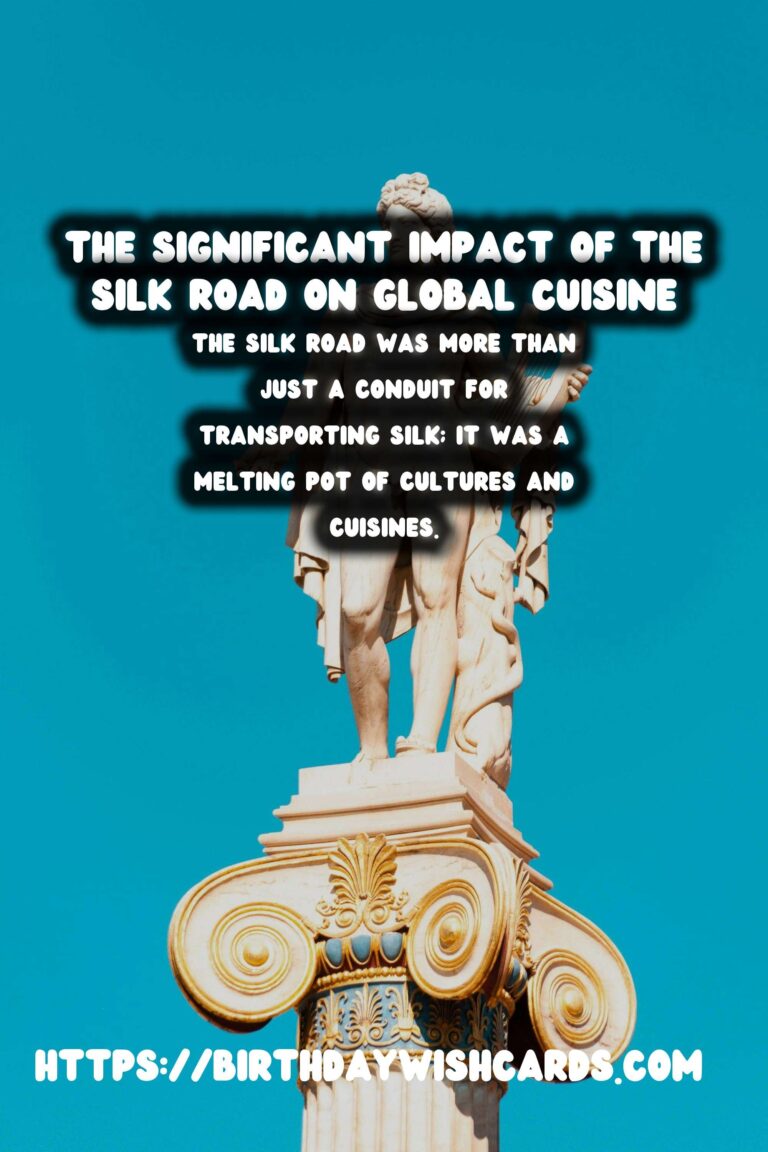
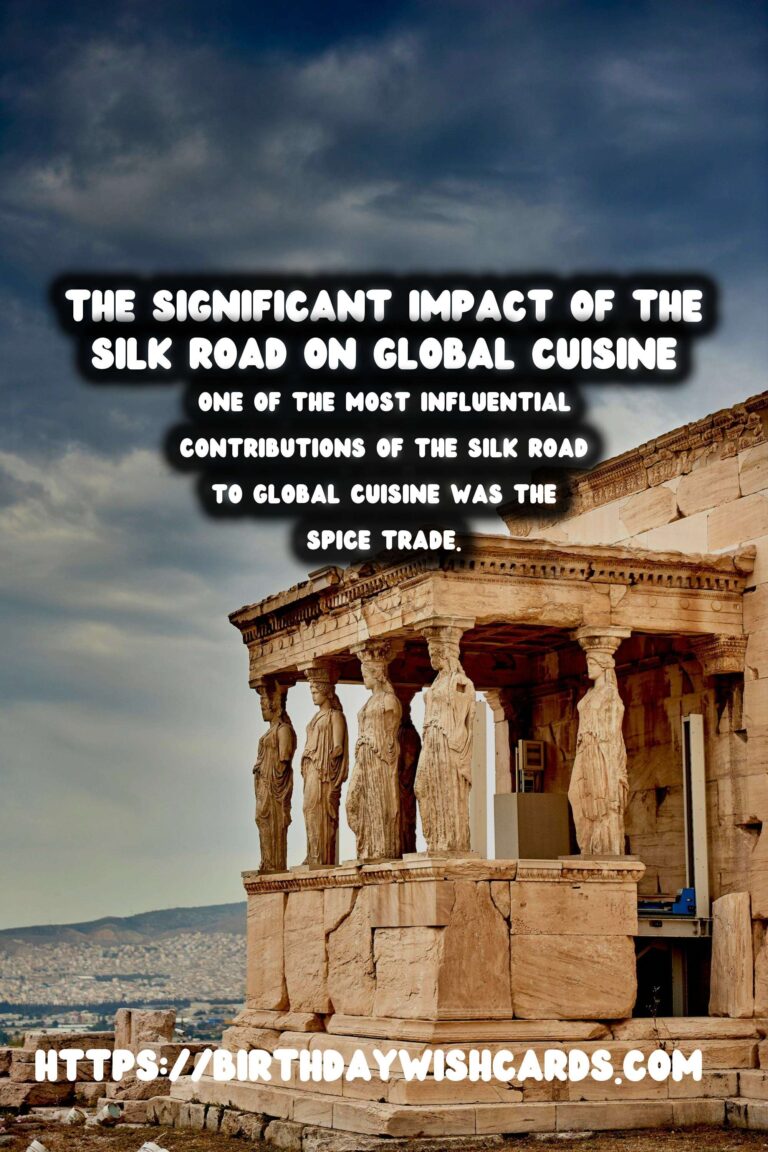
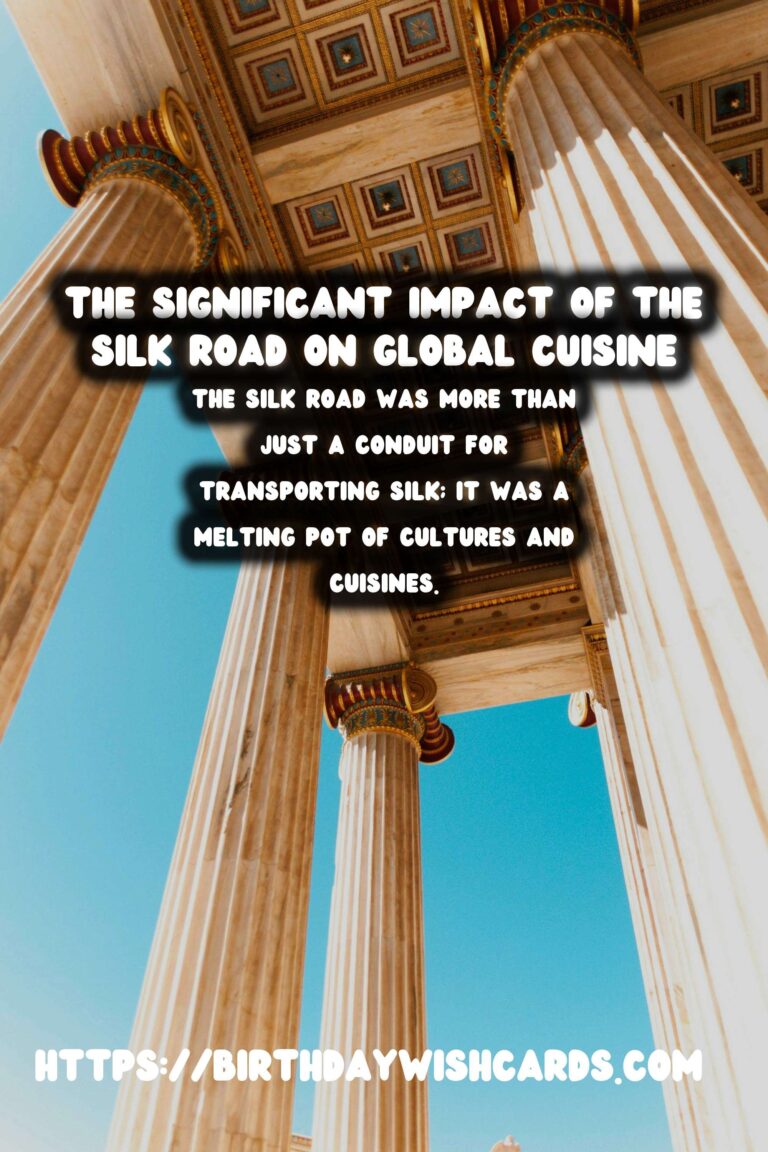
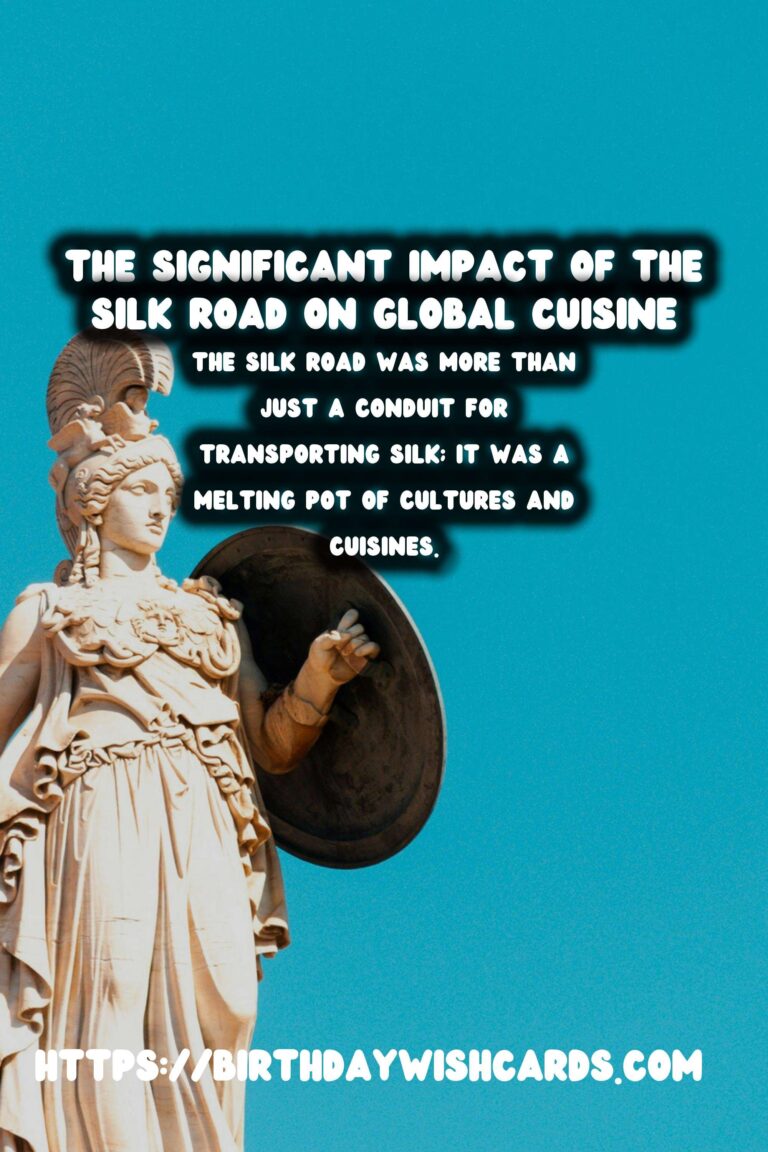
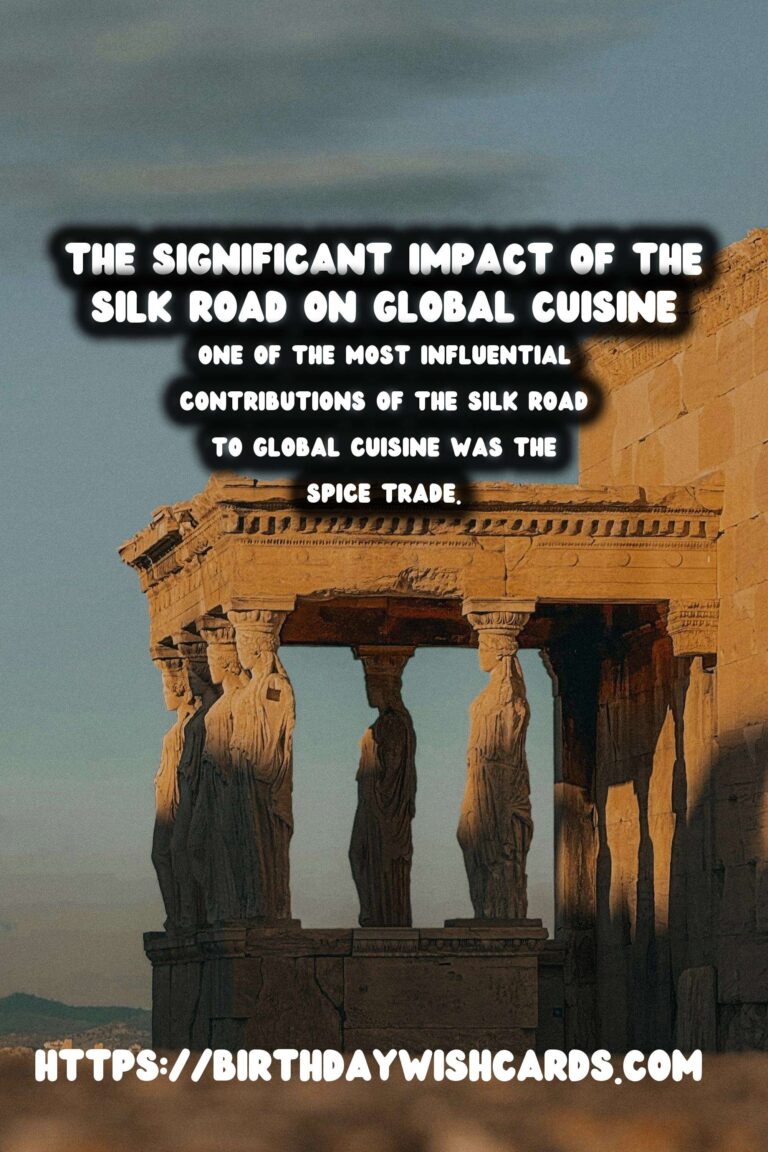
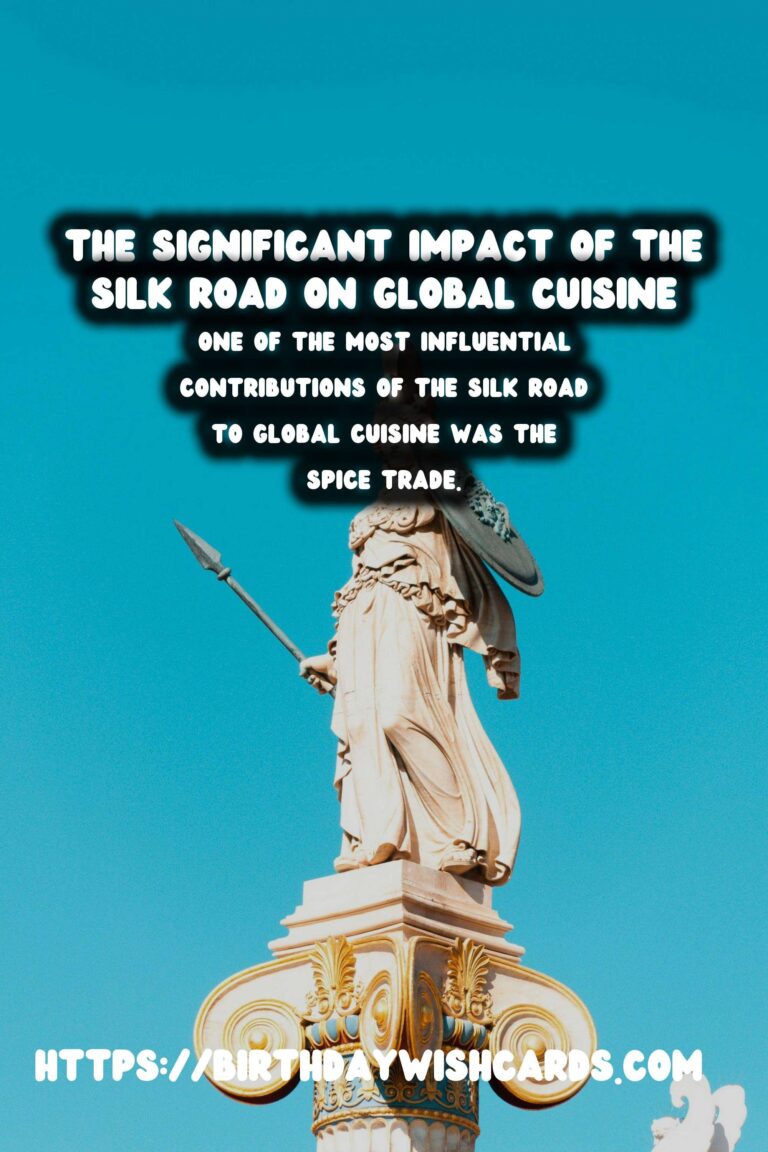
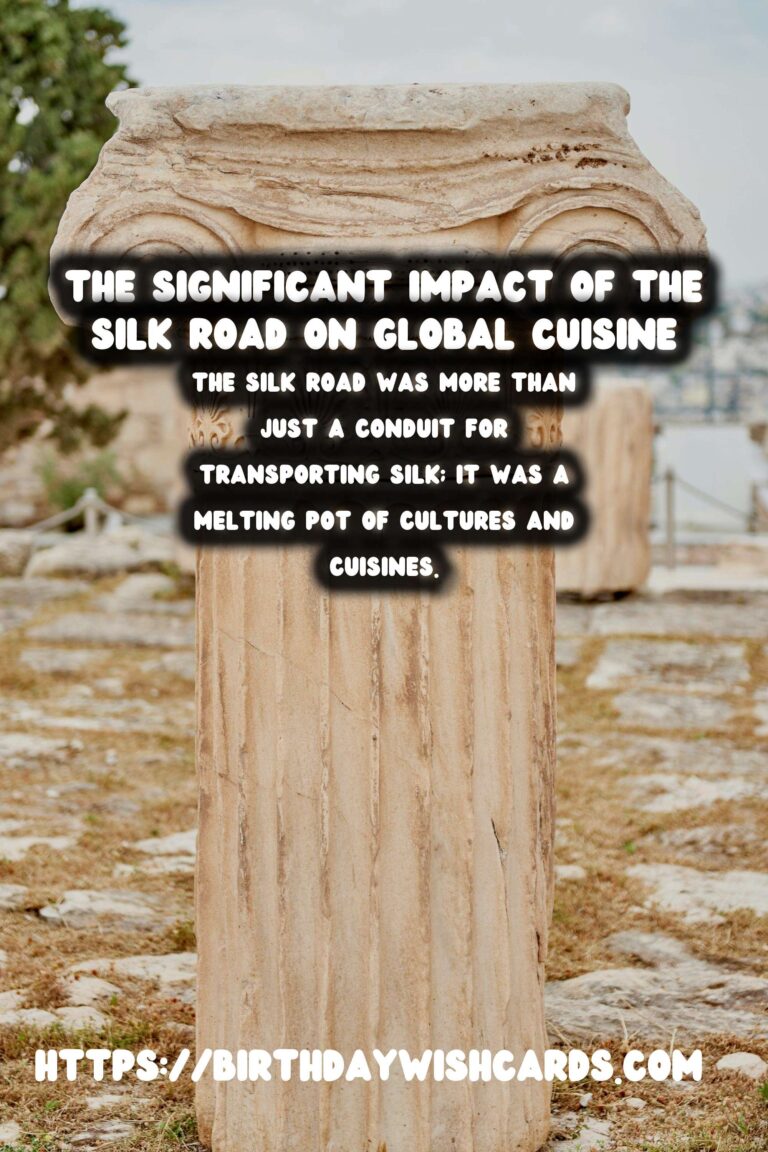
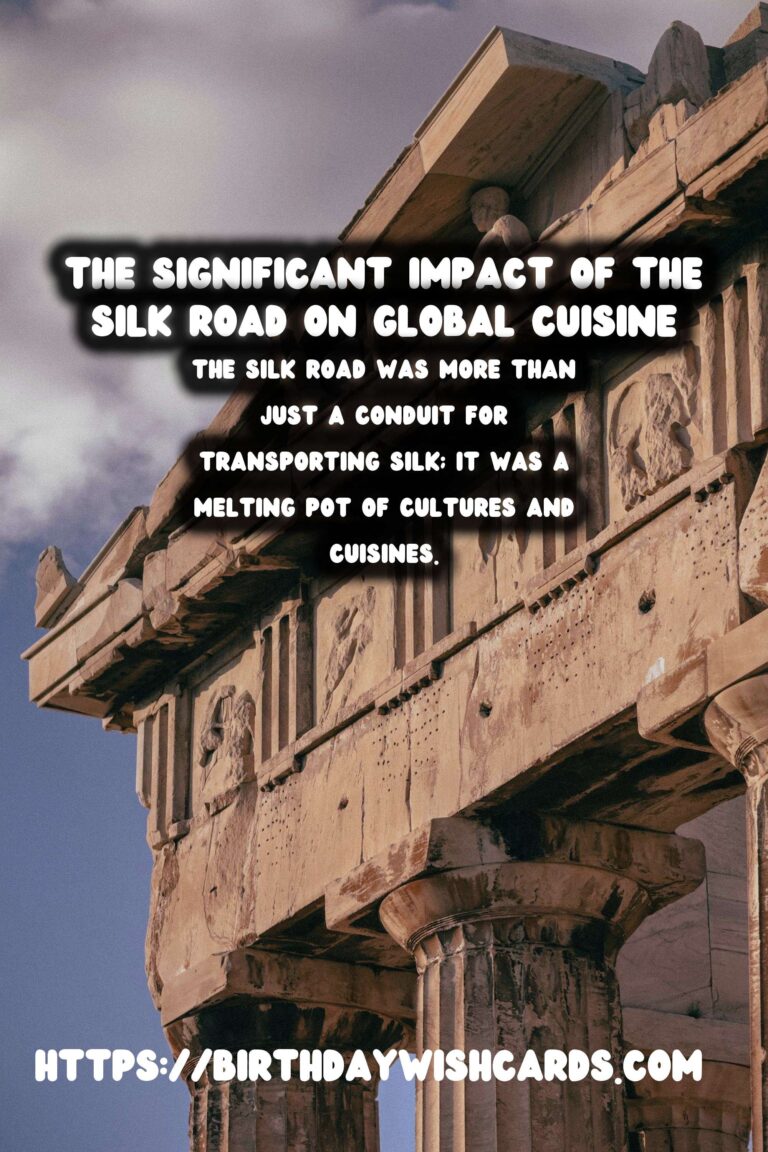

#SilkRoad #FoodHistory




